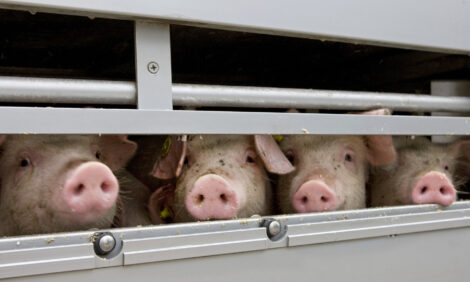



CME: Why Pork's Been Added to the MPR System
US - USDA’s Agricultural Marketing Service (AMS) announced on Wednesday its plan to form a committee to write rules for a new wholesale pork price reporting system, write Steve Meyer and Len Steiner.The announcement, which can be found here, is in response to a provision in the Mandatory Price Reporting Act of
2010 which reauthorized USDA’s mandatory price reporting (MPR) system for hogs, sheep, cattle, beef and lamb. The provision added
pork to that list and specified that USDA must use a “negotiated rulemaking“ process that involves the affected parties in writing the
proposed rule. The inclusion of such groups in drafting a proposed rule is not the usual process. USDA (and most other federal departments
and agencies for that matter) usually draft proposed rules internally and then allow affected groups to comment on those
rules before publishing a final rule to govern how a given law will be enforced. Such was the case with the proposed rule from the
Grain Inspection, Packers and Stockyards Administration (GIPSA) whose comment period closed on Monday. The pork industry
groups that asked for pork to be included in the MPR system believed that the complexity of wholesale pork markets would be best
served by up-front participation of the groups that know and understand those markets.
Congress apparently agreed and here we are.
AMS has identified several organizations that it believes should be represented on the committee. They include the National
Pork Producers Council, Chicago Mercantile Exchange and the Livestock Marketing Information Center as well as general farm organizations,
packer, processor and food marketing organizations and, of course, AMS itself. The announcement spells out the process to
nominate organizations or individuals to serve on the committee which will have no more than 25 members. Daily Livestock Report
readers with expertise or direct interest in wholesale pork markets are encouraged to participate in the process.
Why has pork been added to the MPR system? The
short answer is “Because prices for only a very small fraction of
wholesale pork cuts are being reported.“ This low proportion of
cuts calls into question the accuracy and dependability of
USDA’s estimated cutout value — which is being used to price a
growing number of hogs. Thus the keen interest of hog producers
in the inclusion of pork in MPR and in the rule making process.
As can be seen below, in most weeks since 2005,
wholesale prices for only 2 to 4 per cent of total weekly pork production
have been reported to AMS. And this percentage is aggregated
across all cuts. Many individual cuts have been reported far less
frequently. The low percentage of cuts that is reported is the
result of a) thinly traded markets for some cuts and b) thinly reported
markets for virtually all cuts.

Mandatory price reporting is not expected to increase
the volume of cuts that are actually traded. A high proportion of
hams, bellies, picnics (often referred to as “processing cuts) are
processed by the companies that slaughter the hogs and are
thus never actually traded. A much higher proportion of “retail
cuts“ such as loins, ribs and butts are sold to other companies. Both of these are expected to remain the case under MPR.
Mandatory price reporting for wholesale pork cuts, however, should solve the thin reporting issue by requiring that the prices of
all cuts that are sold to other companies be reported to USDA. Sellers will not have the option of not reporting prices so USDA should
get a price for any items that actually move from one company to another. Nowhere near all of those sales, however, will be spot or
negotiated prices since a significant percentage of pork cuts are formula priced off of spot prices, weekly average prices, moving average
prices — the list is very long.
Bottom line: While the pork mandatory system will increase the proportion of cuts for which we get prices reported, it will be
nowhere near 100 per cent. Our guess is that weekly spot market volume will be in the 30-40 per cent range — still a lot better than 2-4 per cent!
We expect the pork system to look much like the beef system which has been in operation since 2000. Beef packers report
prices and volumes daily for each cut sold and specify whether those cuts were sold domestically, to NAFTA countries or to other export
markets. Those destination designations are one source of weekly beef export data which has been published since the MPR system
started in 2000. Weekly pork export reporting was also added as part of this year’s re-authorization.








